Black Hills National Forest
- December 21, 2023
- 0 comment
In the heart of the American Midwest, the Black Hills National Forest stands as a captivating testament to the raw beauty of nature. Spanning over 1.25 million acres across the picturesque landscapes of southwestern South Dakota and northeastern Wyoming, this expansive haven is meticulously managed by the Forest Service. With its headquarters in the quaint town of Custer, South Dakota, and additional ranger district offices strategically scattered in Custer, Rapid City, and Spearfish in South Dakota, as well as Sundance, Wyoming, the forest offers a diverse and immersive experience for all who venture into its depths.

Boasting a rich tapestry of flora and fauna, from the towering ponderosa pines to the elusive black bears and majestic elk, the Black Hills National Forest is a sanctuary for both nature enthusiasts and seekers of tranquility. Amidst its undulating terrains, the forest cradles the iconic Black Elk Peak, proudly claiming the title of the highest mountain in South Dakota and the loftiest peak east of the Rocky Mountains in the United States. As a haven for biodiversity and a testament to the enduring spirit of the American wilderness, the Black Hills National Forest beckons, inviting all to explore its enchanting wonders.
Characterizing Features of the Angeles National Forest
- Sacred Indigenous Sites: The Black Hills National Forest houses mountains and features considered sacred by indigenous peoples, attracting vision quests and cultural activities.
- Historical Evolution: Established in 1897 as the Black Hills Forest Reserve, the forest has a unique historical evolution, transitioning to a National Forest under the Forest Service in 1907.
- Cultural Significance: The name “Black Hills” originates from Lakota words “pahá sápa,” underscoring the cultural significance of the region to indigenous communities.
- Post-Wildfire Establishment: The forest’s creation was prompted by devastating wildfires in 1893, shaping its conservation-focused mission and practices.
- Distinct Mountain Ranges: Encompassing the Black Hills, Elk Mountains, and Bear Lodge Mountains, the forest spans three distinct and geographically unique mountain ranges.
- Highest Peak in South Dakota: Black Elk Peak, within the forest, stands as the tallest mountain in South Dakota, contributing to its unique topography.
- Biodiversity: The forest supports a diverse array of flora and fauna, including rare and unique species, creating a rich and balanced ecosystem.
- Preserved Wilderness: The Black Elk Wilderness, with a prohibition on motorized transport, ensures the preservation of a pristine and untouched environment.
- Scenic Byways: The Peter Norbeck National Scenic Byway and Spearfish Canyon National Forest Scenic Byway offer exceptionally scenic drives, providing unique perspectives of the forest.
- Adjacent National Parks: The forest is surrounded by and interacts with separate National Park Service-administered areas, such as Jewel Cave National Monument, Mount Rushmore National Memorial, and Wind Cave National Park.
- Cultural Namesake: The forest’s name, derived from the Lakota language, adds a cultural layer to its identity, connecting it to the heritage of indigenous communities.
- Mining and Logging Heritage: Beyond its natural beauty, the forest has played a role in mining and logging activities, contributing to the region’s historical economic significance.
- Wildlife Habitats: The forest provides crucial habitats for a variety of wildlife, including rare and unique species, contributing to its status as a biodiversity hotspot.
- Land Use Balance: Permittees engage in responsible activities such as mining, logging, and ranching, demonstrating a unique balance between conservation and sustainable land use.
- Distinct County Distribution: The forest spans parts of seven counties, each contributing to its character, with Crook and Weston being the only counties in Wyoming, adding a unique inter-state dimension.
History
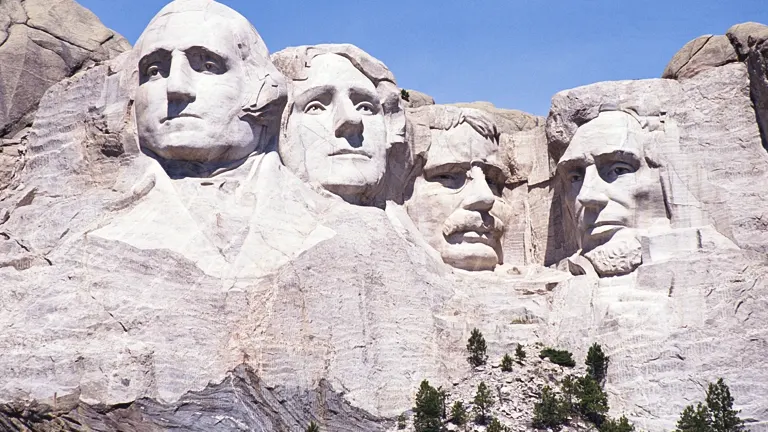
The Black Hills National Forest, located in southwestern South Dakota and northeastern Wyoming, boasts a rich and multifaceted history that dates back centuries. Long before its establishment, the region held profound cultural and spiritual significance for indigenous tribes, including the Sioux and Cheyenne, who considered the mountains sacred. Early exploration by the La Vérendrye brothers in 1742 and subsequent expeditions provided insight into the area’s geography. The 19th century witnessed the devastating impact of smallpox epidemics on indigenous populations, altering the dynamics of the region. In response to destructive wildfires in 1893, President Grover Cleveland established the Black Hills Forest Reserve in 1897. President William McKinley expanded its boundaries in 1898, acknowledging the forest preservation decrees of the Timber Culture Act and Forest Reserve Act of 1891. The forest underwent a transformative period in 1907 when, under the newly created Forest Service, it was redesignated as the Black Hills National Forest. The Lakota name “pahá sápa,” meaning “hills that are black,” reflects the cultural importance of the region. Beyond conservation, the forest has played a role in economic activities such as mining, logging, and ranching, regulated through land leases. Today, the Black Hills National Forest stands as a testament to the enduring intersection of nature, culture, and conservation, offering a diverse and captivating landscape for exploration and enjoyment.
Importance in Conservation and Recreation of Black Hills National Forest
The Black Hills National Forest occupies a paramount role in both conservation and recreation, embodying a harmonious coexistence of natural preservation and outdoor enjoyment. Renowned for its diverse ecosystems, the forest acts as a sanctuary for biodiversity, sustaining a plethora of plant and animal species. Conservation initiatives within its borders aim to safeguard these habitats, ensuring the resilience of the region’s ecosystems. Beyond its ecological significance, the forest holds cultural and historical importance, with indigenous sacred sites and a name rooted in Lakota heritage. As a haven for outdoor enthusiasts, the forest offers a wealth of recreational opportunities, from hiking and camping to fishing and wildlife observation. Scenic byways weave through its majestic landscapes, providing breathtaking views and minimizing the environmental impact of exploration.
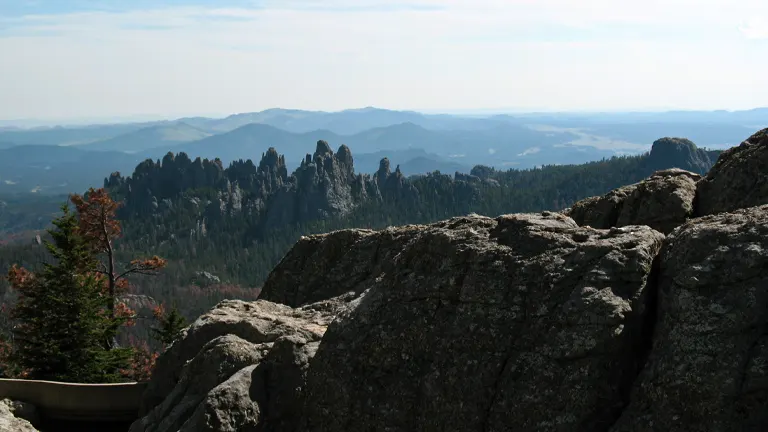
Educational programs within the forest foster an understanding of its ecological complexities and cultural relevance, encouraging visitors to appreciate the delicate balance between nature and human interaction. By accommodating sustainable land use practices, such as regulated logging and mining, the forest strikes a balance between resource utilization and conservation. This equilibrium not only supports local economies through tourism but also ensures the long-term health and vitality of the Black Hills National Forest, making it a cherished and invaluable resource for generations to come.
Unique Location of Black Hills National Forest
The Black Hills National Forest occupies a unique and captivating location in the American Midwest, spanning southwestern South Dakota and northeastern Wyoming. Nestled within these states, the forest’s distinctiveness arises from its position within the iconic Black Hills, a mountainous region renowned for its rugged landscapes and cultural significance. Surrounded by expansive prairies, the forest stands as a geographical anomaly, featuring elevations that contrast sharply with the surrounding plains. Its proximity to Rapid City, South Dakota, adds to its accessibility, making it a natural playground for outdoor enthusiasts.
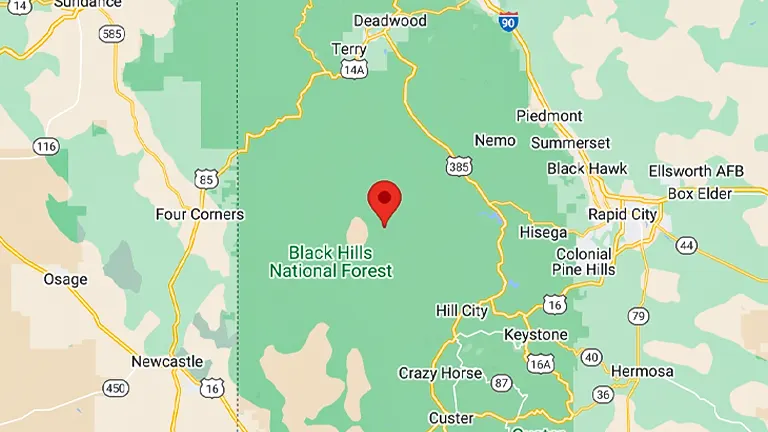
The Black Hills National Forest serves as a captivating transition zone between the Great Plains and the Rocky Mountains, offering a mosaic of ecosystems that include ponderosa pine forests, grassland prairies, and pristine mountain environments. This unique location contributes to the forest’s diverse flora and fauna, creating a haven for biodiversity within its boundaries. Additionally, the forest’s strategic placement near prominent national monuments, such as Mount Rushmore and Jewel Cave, enhances its allure as a destination, adding historical and cultural dimensions to its distinctive geographical character. The Black Hills National Forest, with its singular location, weaves together natural wonders, cultural heritage, and recreational opportunities in a way that sets it apart as an extraordinary landscape within the American heartland.
Diverse Vegetation and Unique Plant Species:
- Ponderosa Pine (Pinus ponderosa): Dominating the landscape, the ponderosa pine is a key tree species in the Black Hills National Forest, forming extensive forests with its distinctive tall trunks and long needles.
- Aspen (Populus tremuloides): Contributing to the forest’s diverse flora, aspen trees provide a stark contrast with their vibrant, fluttering leaves and are often found in mixed stands with ponderosa pine.
- Bur Oak (Quercus macrocarpa): Thriving in various habitats within the forest, the bur oak is a hardwood species that adds diversity to the tree composition, particularly in lower elevations.
- Birch (Betula): Birch trees, including various species, contribute to the forest’s deciduous component, offering a different texture and color to the landscape.
- Spruce (Picea): In higher elevations of the forest, spruce trees become more prevalent, adding to the ecological diversity and creating distinct habitats within the landscape.
- Grassland Prairie Vegetation: At lower elevations, the forest transitions into grassland prairie, featuring a variety of grasses and herbaceous plants adapted to this unique ecosystem.
- Black Hills Spruce (Picea glauca densata): Endemic to the region, the Black Hills spruce is a locally adapted subspecies of white spruce found in the higher elevations of the forest.
- Black Hills Quaking Aspen (Populus tremuloides): This specific aspen subspecies found in the Black Hills is recognized for its distinctive genetic characteristics and adaptations to the local environment.
- Woodland Sunflower (Helianthus): In the grassland prairies and open woodlands, the woodland sunflower adds vibrant yellow hues to the forest floor during the growing season.
- Bearberry (Arctostaphylos uva-ursi): Commonly found in rocky and sandy soils, bearberry is a low-growing evergreen shrub with red berries, contributing to the diversity of understory vegetation.
- Wild Bergamot (Monarda fistulosa): This native flowering plant, also known as bee balm, adds color and fragrance to the forest understory, attracting pollinators like bees and butterflies.
- Black Hills Violet (Viola sororia priceana): Endemic to the Black Hills, this violet species is recognized for its unique characteristics and adaptation to the local environment.
- Western Yarrow (Achillea millefolium): Thriving in open areas and meadows, western yarrow is a common herbaceous plant with distinctive feathery leaves and clusters of small white flowers.
- Black Hills White Fir (Abies concolor latifolia): Found in higher elevations, the Black Hills white fir is a locally adapted variety of the more widespread Rocky Mountain white fir.
- Green Gentian (Frasera speciosa): This tall, showy wildflower with striking blue-green flowers is a notable plant species found in the meadows and open woodlands of the Black Hills National Forest.
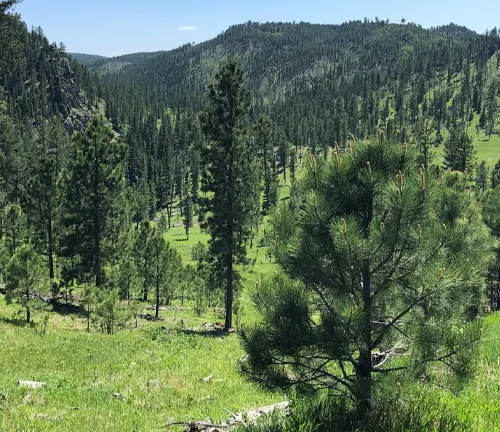
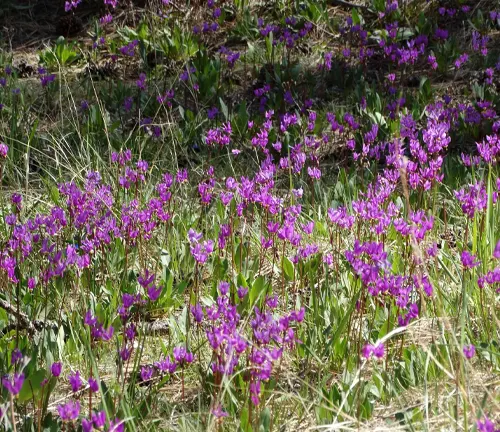
Fauna:
- Elk (Cervus canadensis): Majestic elk are a common sight in the Black Hills National Forest, particularly in the meadows and wooded areas, adding to the region’s charismatic megafauna.
- Mule Deer (Odocoileus hemionus): Graceful mule deer are prevalent throughout the forest, adapting to various habitats ranging from open grasslands to dense woodlands.
- White-Tailed Deer (Odocoileus virginianus): These agile deer are frequently encountered in the diverse ecosystems of the forest, including both open and wooded areas.
- Pronghorn (Antilocapra americana): Known for their incredible speed, pronghorn inhabit the grassland prairies within and around the Black Hills National Forest.
- Black Bears (Ursus americanus): The forest is home to black bears, and lucky visitors may catch a glimpse of these elusive and iconic North American mammals.
- Cougars (Puma concolor): Also known as mountain lions, cougars are present in the forest, particularly thriving due to abundant prey like deer and elk.
- Coyotes (Canis latrans): These adaptable predators are commonly observed throughout the forest, displaying their resourcefulness in a variety of habitats.
- Bighorn Sheep (Ovis canadensis): In the rugged terrain of the Black Hills, bighorn sheep can be spotted, showcasing their impressive climbing abilities.
- Mountain Goats (Oreamnos americanus): Found in the more mountainous areas, mountain goats are adept climbers and are part of the unique fauna of the Black Hills.
- Wild Turkeys (Meleagris gallopavo): The forest provides suitable habitats for wild turkeys, offering opportunities for birdwatchers to observe these native birds.
- Bald Eagles (Haliaeetus leucocephalus): Along with a diverse array of bird species, bald eagles are often seen near streams and water sources within the forest.
- Hawks: Various hawk species, such as red-tailed hawks and Cooper’s hawks, soar through the skies, contributing to the avian diversity of the region.
- Osprey (Pandion haliaetus): Nesting near water bodies, ospreys are skilled fishers and are part of the raptor community thriving in the forest.
- Peregrine Falcon (Falco peregrinus): Known for their incredible speed and aerial prowess, peregrine falcons inhabit the forest, particularly in cliff areas.
- Various Songbirds: The forest is a haven for songbirds, with a multitude of species such as warblers, finches, and sparrows contributing to the vibrant birdlife in the region.
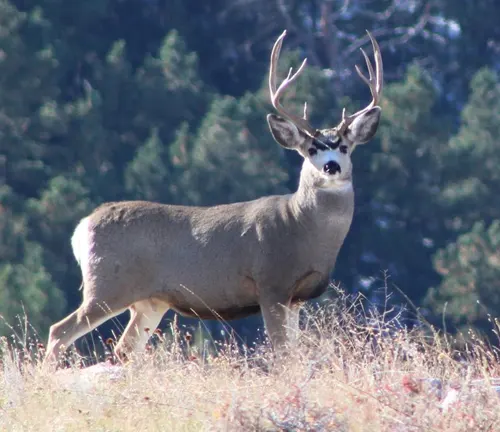
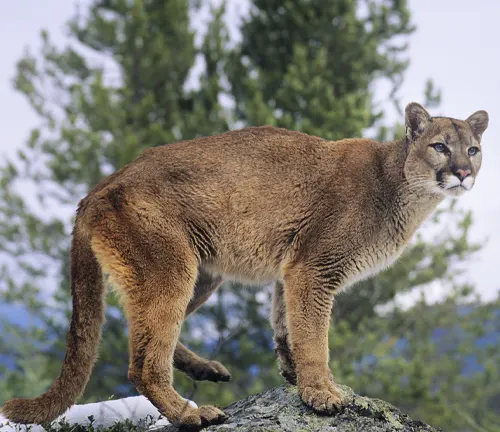
Importance as a Wildlife Corridor and Habitat for Threatened Species
The Black Hills National Forest stands as a crucial wildlife corridor and habitat for numerous species, playing a pivotal role in fostering biodiversity and supporting the conservation of threatened and endangered animals. The expansive and varied landscapes within the forest serve as a vital passage for wildlife movement, facilitating the natural migration and dispersal of species across the region. This connectivity is especially significant for large mammals like elk, mule deer, and pronghorn, ensuring genetic diversity and healthier populations.
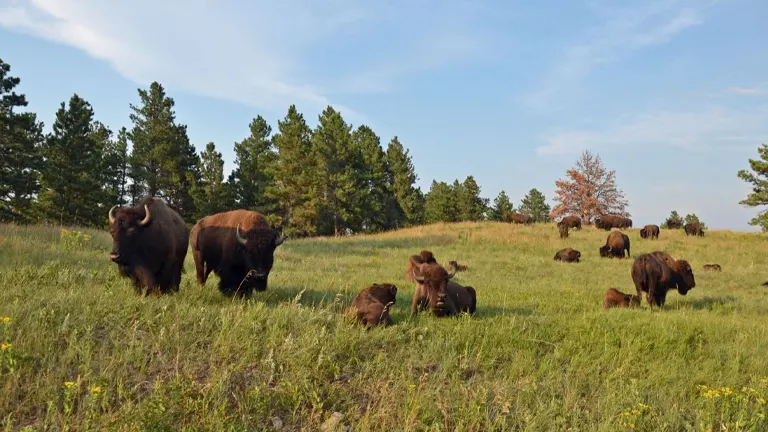
Additionally, the forest provides essential habitat for threatened species such as the black-footed ferret, an elusive carnivore that relies on prairie dog colonies, which are present in the grassland prairies of the Black Hills. The rugged terrain and diverse vegetation also cater to the needs of bighorn sheep and mountain goats, contributing to the conservation of these iconic species. The Black Hills National Forest, with its intricate network of ecosystems, not only acts as a haven for wildlife but also as a linchpin in the broader conservation efforts, emphasizing the importance of preserving such natural corridors for the long-term survival of various species.
Activities in Black Hills National Forest for Visitors
1. Hiking
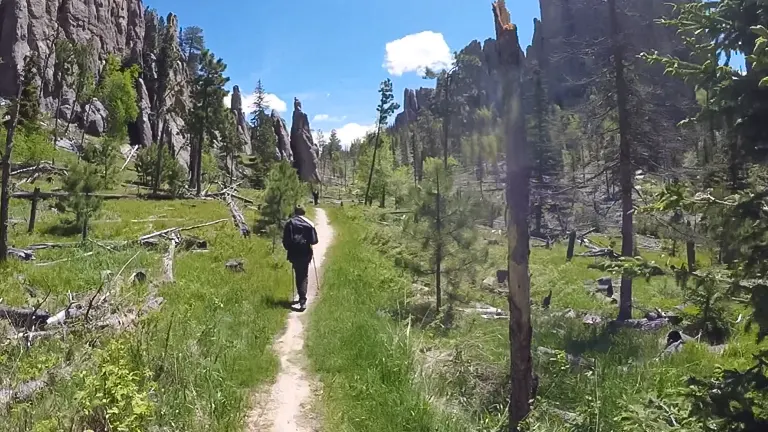
The extensive trail network not only provides stunning views but also immerses hikers in the diverse ecosystems of the Black Hills. Hiking becomes a journey of environmental discovery, offering insights into unique geological formations, diverse flora, and the importance of preserving natural habitats.
2. Camping

Camping in the Black Hills allows visitors to embrace the serenity of nature and fosters a connection with the forest’s ecosystems. It becomes an opportunity to practice responsible outdoor ethics, promoting the Leave No Trace principles and contributing to the conservation of the forest’s pristine environment.
3. Scenic Drives
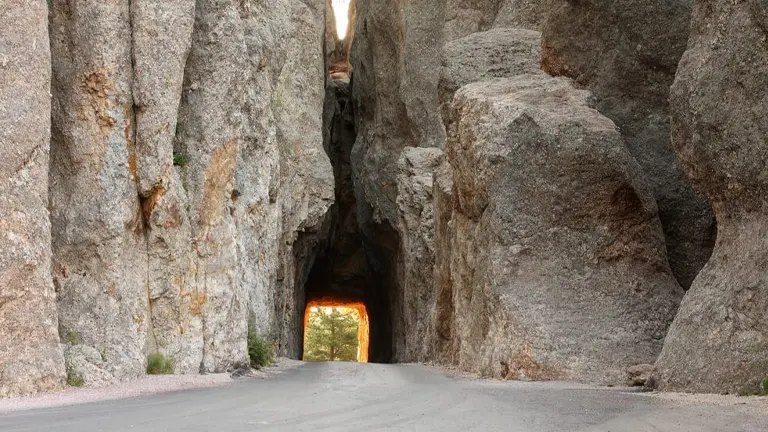
Scenic drives through the Black Hills are more than visual delights; they serve as educational experiences. Visitors gain a deeper understanding of the region’s geological and cultural history, appreciating the significance of conservation efforts in this iconic landscape.
4. Wildlife Viewing
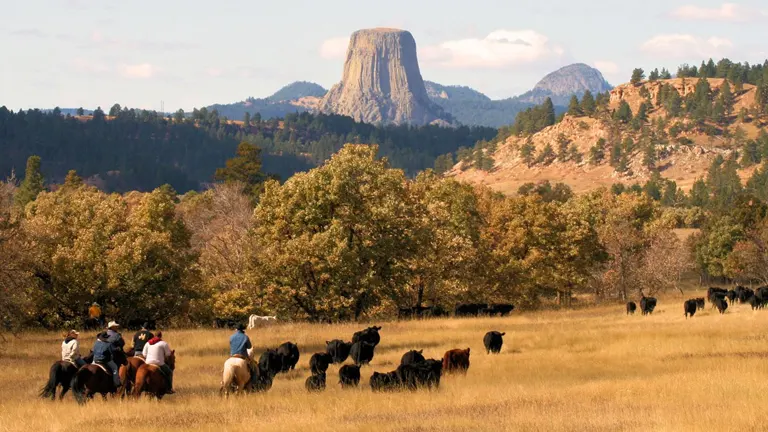
The forest’s diverse wildlife offers more than just captivating moments. Wildlife viewing becomes a gateway to understanding the delicate balance of ecosystems, emphasizing the role of conservation in preserving habitats for elk, deer, and other species.
5. Fishing
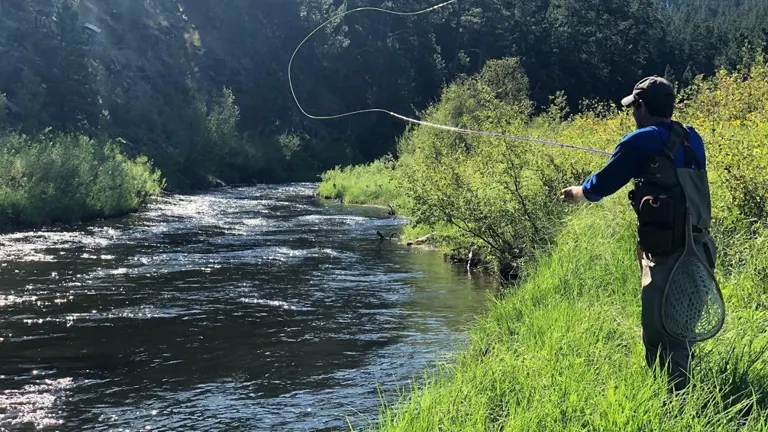
Angling in the forest’s lakes and streams contributes to a broader awareness of aquatic ecosystems. Fishing enthusiasts become advocates for water quality, habitat preservation, and sustainable fishing practices, ensuring the health of fish populations.
6. Mountain Biking
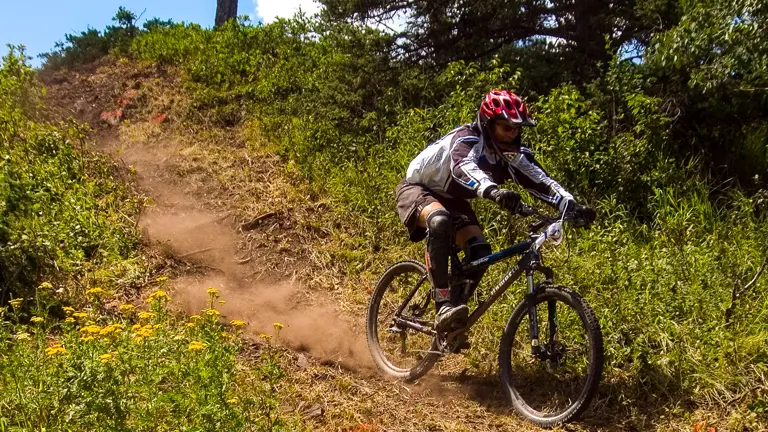
Exploring designated mountain biking trails not only satisfies thrill-seekers but also emphasizes responsible trail usage. Mountain bikers become stewards of the environment, promoting sustainable outdoor recreation and minimizing the impact on the forest ecosystem.
7. Rock Climbing
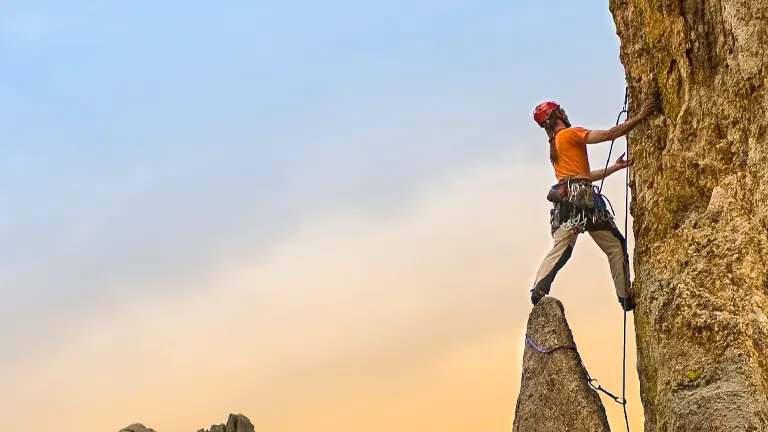
The unique rock formations in the Black Hills offer rock climbers an exhilarating experience. Climbers become champions for the preservation of these geological wonders, advocating for ethical climbing practices and conservation efforts.
8. Birdwatching
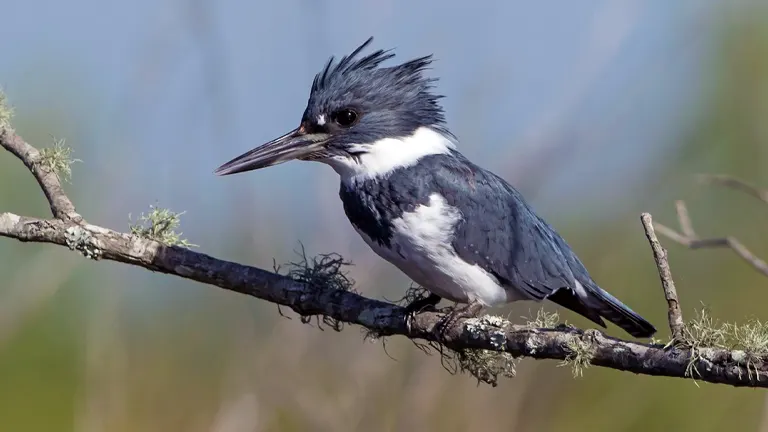
The diverse bird population provides a captivating experience for birdwatchers. Observers become advocates for avian conservation, understanding the integral role birds play in the forest ecosystem and contributing to broader efforts to protect their habitats.
9. Stargazing
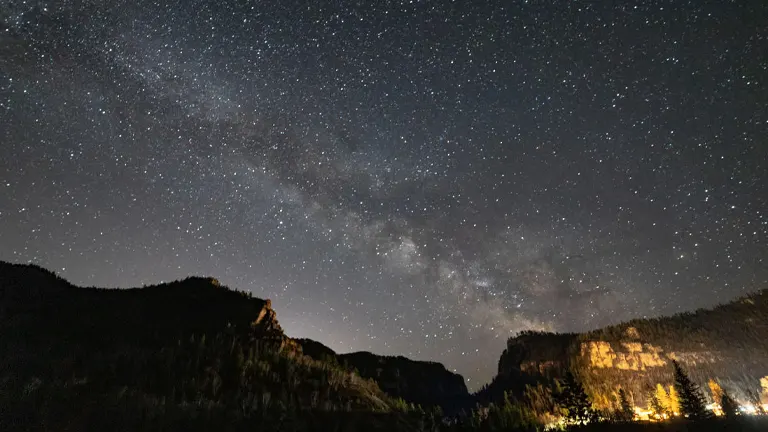
The forest’s dark skies provide opportunities for stargazing, creating a connection between visitors and the cosmos. Stargazers become advocates for preserving dark skies, contributing to the protection of nocturnal habitats and enhancing the overall visitor experience.
10. Educational Programs
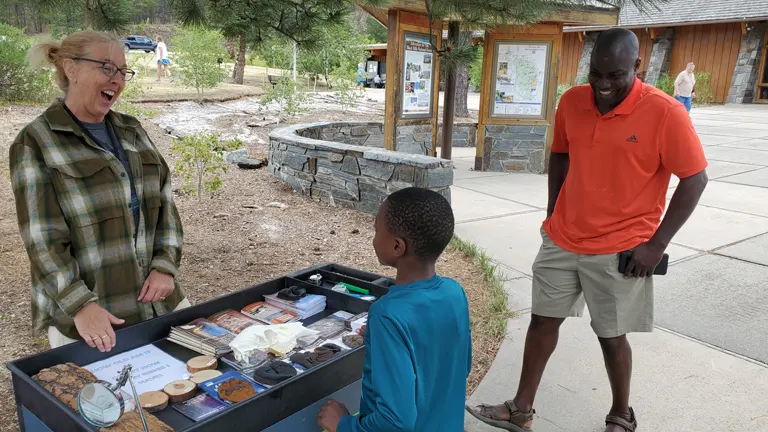
Participating in educational programs deepens visitors’ understanding of the Black Hills ecosystem. These programs promote environmental literacy, empowering individuals to become informed advocates for conservation and sustainable land use.
11. Winter Sports
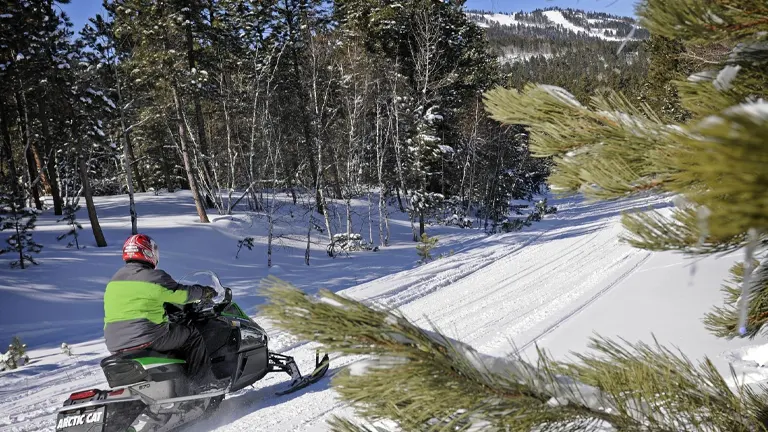
Engaging in winter sports highlights the adaptability of the Black Hills to seasonal changes. Participants become advocates for preserving winter habitats and recognizing the ecological significance of these areas for wildlife during colder months.
Conservation and Management
- Preservation of Biodiversity: Conservation efforts prioritize protecting and enhancing the diversity of plant and animal species within the forest. This includes habitat restoration, monitoring endangered or threatened species, and implementing measures to minimize the impact of human activities on sensitive ecosystems.
- Wildfire Management: Proactive wildfire management strategies are crucial, involving controlled burns, fuel reduction efforts, and collaborative programs with firefighting agencies to enhance preparedness and response, safeguarding the forest from the devastating impacts of uncontrolled wildfires.
- Recreation Management: Conservation efforts aim to balance recreational activities with environmental preservation. Management plans designate areas for specific activities, establish trail systems, and implement measures to minimize the environmental impact of visitors while providing opportunities for outdoor recreation.
- Water Resource Protection: Conservation focuses on maintaining water quality and supporting watershed health. This includes erosion control, riparian zone protection, and monitoring water quality to ensure clean and sustainable water resources, vital for both the ecosystem and surrounding communities.
- Collaboration and Partnerships: Successful conservation in the Black Hills National Forest involves collaboration with various stakeholders. This includes partnerships with tribal nations, local communities, non-profit organizations, and government agencies to address shared conservation goals and address complex challenges, ensuring a holistic and inclusive approach to forest management.
Recommendation
I highly recommend exploring the Black Hills National Forest for a captivating blend of natural beauty and cultural richness. From its diverse ecosystems and iconic landmarks to recreational opportunities, the forest offers a unique and immersive experience. Engage in responsible outdoor activities, such as hiking and wildlife viewing, while respecting conservation efforts. The scenic drives, historical sites, and collaborative conservation initiatives make the Black Hills National Forest a must-visit destination for those seeking a harmonious balance between nature and recreation.
Conclusion
The Black Hills National Forest stands as a testament to the awe-inspiring wonders of nature and the importance of thoughtful conservation. Its towering ponderosa pines, diverse wildlife, and breathtaking landscapes create a tapestry that captures the essence of the American wilderness. The careful balance between recreation and preservation, exemplified through hiking trails, scenic drives, and collaborative conservation initiatives, ensures that visitors can both appreciate the beauty of the forest and contribute to its long-term sustainability. The historical and cultural significance woven into the fabric of the Black Hills adds an enriching layer to the overall experience. Whether seeking outdoor adventures, cultural exploration, or simply a peaceful retreat into nature, the Black Hills National Forest beckons with open arms, inviting all to discover, respect, and marvel at the wonders it holds.
Encouraging Responsible Visitation
Contemplating my experiences in the Black Hills National Forest, I am compelled to advocate for responsible visitation. This living, dynamic ecosystem thrives when visitors engage conscientiously. Whether you’re an avid hiker, a photography enthusiast, or a family in search of a weekend retreat, each moment spent in the Black Hills National Forest offers a chance to actively participate in its preservation.
FAQs
- Are there any special events or festivals held in the Black Hills National Forest?
Yes, the Black Hills host various events throughout the year, from the iconic Sturgis Motorcycle Rally to cultural celebrations like the Lakota Nation Invitational. Check the forest’s event calendar for details on festivals that complement your visit. - Can I spot wildlife during my visit, and what species might I encounter?
Absolutely! The Black Hills are home to diverse wildlife, including elk, deer, mountain goats, and even the elusive black bear. Keep your eyes peeled, especially during dawn and dusk, for a chance to witness these fascinating creatures in their natural habitat. - Are there specific trails suitable for beginners or family hikes?
Yes, the Black Hills offer trails catering to all skill levels. For a family-friendly hike, consider the Sunday Gulch Trail or the Sylvan Lake Shore Trail. These paths provide scenic views without requiring advanced hiking skills. - What measures are in place to prevent wildfires, and how can visitors contribute to fire safety?
The forest implements proactive wildfire management strategies, including controlled burns and fuel reduction efforts. Visitors can contribute by following fire safety guidelines, obeying fire restrictions, and reporting any signs of smoke promptly. - Are there any unique geological features or rock formations to explore?
Certainly! The Black Hills boast captivating geological wonders such as the Needles Highway and Cathedral Spires. These formations offer both a visual spectacle and a glimpse into the region’s rich geological history. - Can I bring my pet when exploring the Black Hills National Forest?
Yes, pets are welcome in many areas, but it’s crucial to check specific trail regulations and leash requirements. Some trails may have restrictions to protect wildlife and maintain a harmonious environment for all visitors. - What cultural sites or historical landmarks can I visit within the forest?
Explore the history of the Black Hills by visiting Mount Rushmore, Crazy Horse Memorial, and the Historic Deadwood district. These landmarks showcase the region’s rich cultural heritage and provide insights into its past. - Are there opportunities for stargazing, and is there any designated dark sky area?
Absolutely! The Black Hills offer excellent stargazing opportunities, and designated areas like Badlands National Park or the Black Elk Wilderness provide minimal light pollution, allowing visitors to experience the magic of the night sky.
In the final verdict of our exploration, the Black Hills National Forest stands as a natural masterpiece, seamlessly weaving biodiversity, cultural richness, and outdoor escapades. Each visit is a commitment to safeguard this living ecosystem. As you bid farewell to its majestic pines and scenic trails, carry the essence of starlit nights and rustling leaves. The Black Hills isn’t just a destination; it’s an opportunity to be a custodian of its timeless charm. Until the next adventure unfolds, let the spirit of the Black Hills linger—a testament to the enduring magic discovered within its embrace.



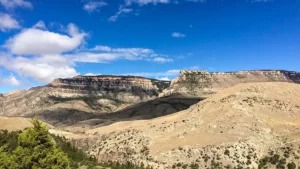

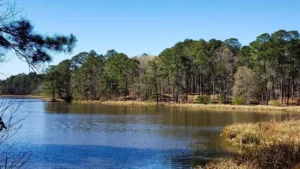

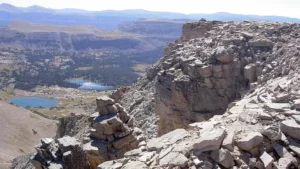
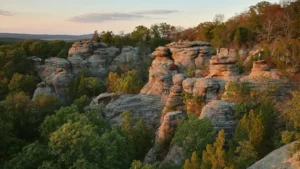
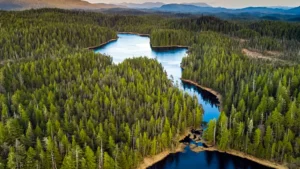
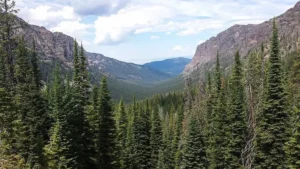
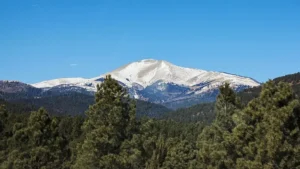


Leave your comment